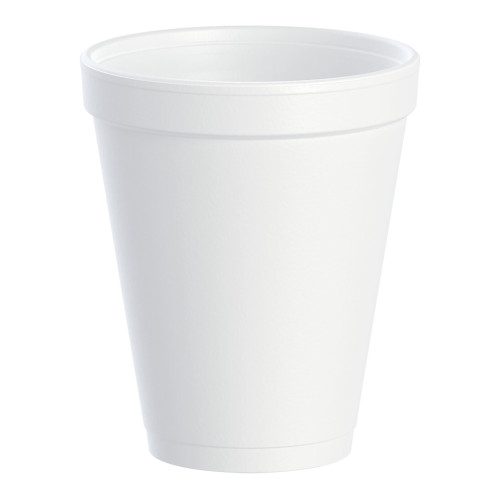-

Dart
Dart Drinking Cups, Insulated Foam, White, Disposable, 10 oz
Dart Disposable Insulated Foam Drinking Cups are the perfect solution to enjoy your favorite beverages, whether they're piping hot or refreshingly cold! These cups are thoughtfully designed to enhance your drinking experience while keeping your drinks at...
As low as $11.27 -

McKesson
McKesson Infusion Pump Pouch - Black, Capacity: 250 mL - 500 mL
Pouch holds feeding pumps that hold up to 500 mL in solution. Use with shoulder strap or hidden waist belt.Feeding pumps with 250 to 500 mL capacity can be transported in this pouch Black Pump pocket with outside view window Use with shoulder strap or...
$28.72 -

McKesson
McKesson Infusion Pump Pouch - Black, Capacity: 3000 mL-4000 mL
McKesson's feeding pump pouch holds most 3000 to 4000 mL feeding pumps so patients can move about freely while remaining connected to their feeding pump.Black, pump pocket with outside window Holds most 2 Liter feeding pumps
$57.62 -

McKesson
McKesson Infusion Pump Pouch - Black, Capacity: 1000 mL-2000 mL
McKesson's feeding pump pouch easily transports 1000 – 2000 mL feeding pumps so patients can move about freely while remaining connected to their feeding pump.Black, pump pocket with outside window Holds most 1000 to 2000 mL feeding pumps
$57.67
Eating Aids

Eating Aids
For those who have had a stroke, people with Parkinson’s disease, those living with arthritis, and many others, the simple act of eating may be difficult. But, there is a wide range of assistive eating devices, from easy-grip utensils to spill-proof cups, that can remove some physical obstacles to eating.
Adaptive Plates and Bowls
Several modifications can make plates easier to use.
Specialized Flatware and Cutlery
Silverware with oversized handles is a common type of assistive eating aid, but large handles are not the only style of adaptive flatware. Other opinions include:
Adaptive Drinkware
Don’t overlook drinkware when considering adaptive devices for eating. The simplest adaptations are glasses with tightly-fitting lids and built-in straws, but there are a few other possibilities, such as:
Adaptive flatware, non-slip plates, scoop bowls, and other assistive eating devices can help maintain independence and dignity for people who have difficulty feeding themselves. Visit SimplyMedical today and browse our selection.
For those who have had a stroke, people with Parkinson’s disease, those living with arthritis, and many others, the simple act of eating may be difficult. But, there is a wide range of assistive eating devices, from easy-grip utensils to spill-proof cups, that can remove some physical obstacles to eating.
Adaptive Plates and Bowls
Several modifications can make plates easier to use.
- Sectional plates are deep and divided into compartments by thin walls. This keeps foods separated and gives the diner a firm surface to scoop food against.
- Plates with raised edges serve the same purpose but without the sections.
- Scoop plates resemble a cross between a bowl and a plate, with a low, plate-like edge on one side and a tall, bowl-like edge.
- Scoop bowls, like scoop plates, have one side that is higher and more curved than the other, reducing spills and splashes.
- Non-slip plates and bowls rest on suction cups that hold them in place on the table.
- Plate guards are free-standing barriers that can be added to any existing plate to give it a raised edge.
- Food bumpers are similar to plate guards but clip onto the edge of the plate to keep them more secure.
Specialized Flatware and Cutlery
Silverware with oversized handles is a common type of assistive eating aid, but large handles are not the only style of adaptive flatware. Other opinions include:
- Weighted silverware can be helpful for people with hand tremors. The weight can reduce tremors, making it easier to keep food on the flatware. Weighted silverware may have significant, easy-to-grip handles or may be indistinguishable from everyday flatware.
- Oversized handles may be an option for people with a weak grip. In addition, handle adapters — usually made of foam tubing — can be added to existing flatware to increase the size of the handle.
- Angled silverware can be helpful for people with a limited range of motion. Some brands may be adjustable, allowing you to increase or decrease the angle.
- Utensil holders strap around the hand and provide support for those who have difficulty grasping without help.
Adaptive Drinkware
Don’t overlook drinkware when considering adaptive devices for eating. The simplest adaptations are glasses with tightly-fitting lids and built-in straws, but there are a few other possibilities, such as:
- Cups with dual handles are more accessible to grip and control than tumblers or single-handled cups. Lids make spills even less likely.
- Weighted cups, like weighted silverware, can help reduce tremors for people with Parkinson’s.
- Regulated drinking cups dispense only small, regulated amounts of liquid, which can be helpful for people with dysphagia (difficulty swallowing).
- "Nosey” cups have a cutaway section that accommodates your nose, allowing you to drink without tipping your head back. This can help reduce the risk of choking for people with dysphagia.
Adaptive flatware, non-slip plates, scoop bowls, and other assistive eating devices can help maintain independence and dignity for people who have difficulty feeding themselves. Visit SimplyMedical today and browse our selection.
